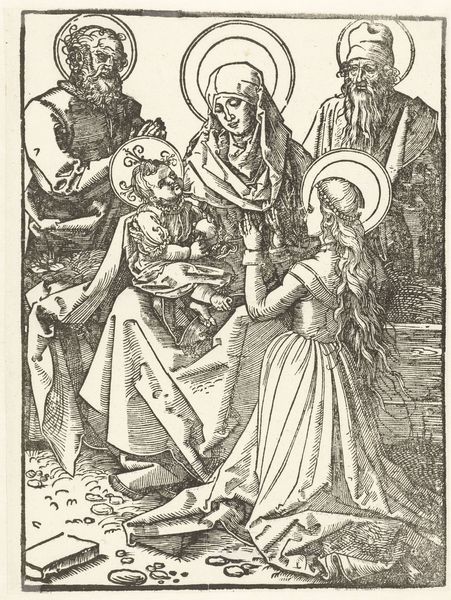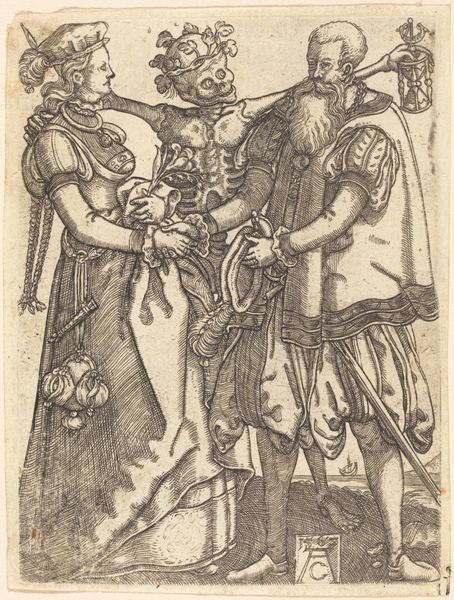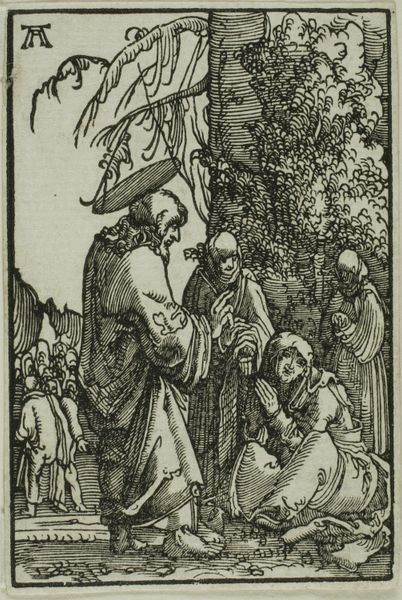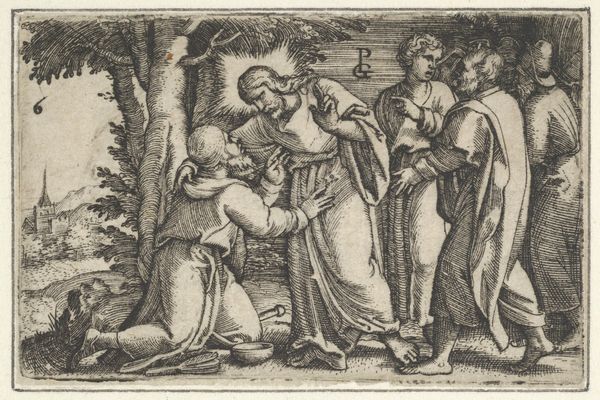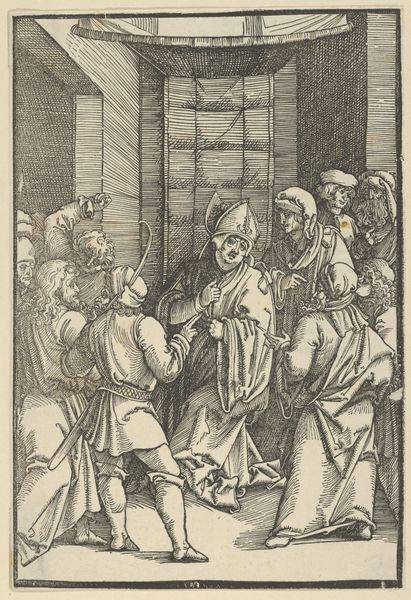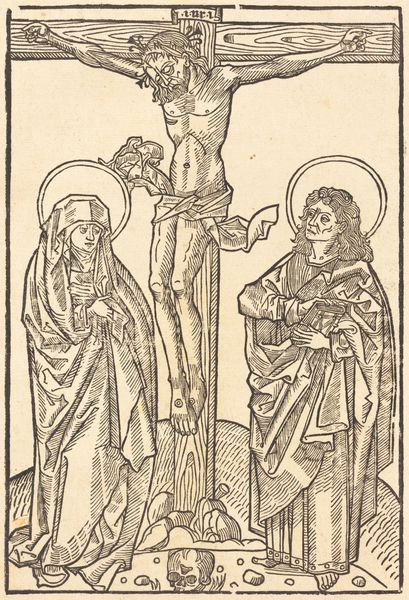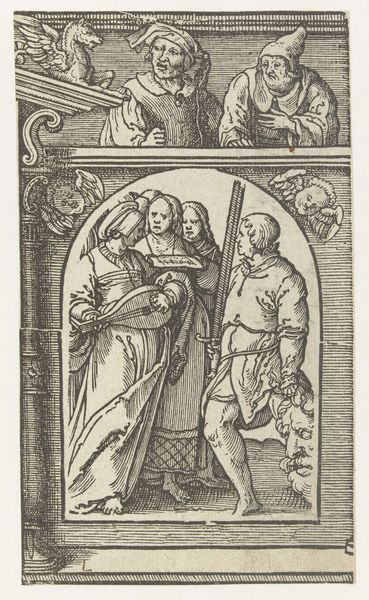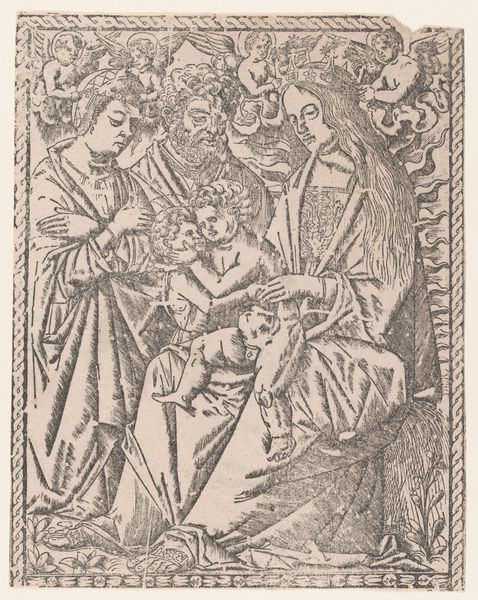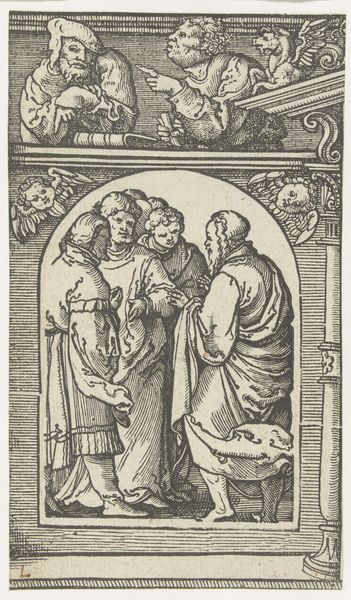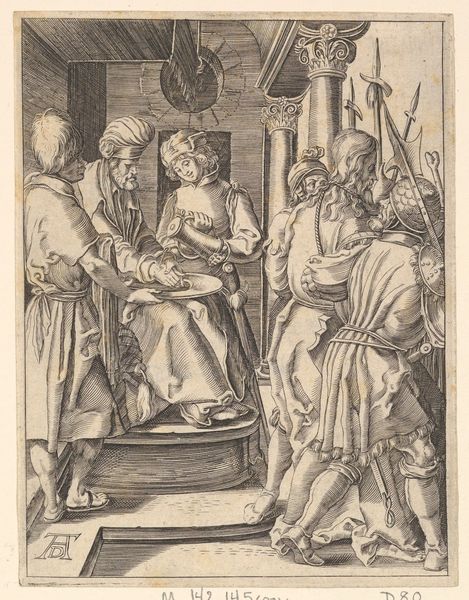
The Three Christian Heroines (Drei Gut Kristin), from Heroes and Heroines 1516
0:00
0:00
drawing, print, woodcut
#
drawing
# print
#
figuration
#
cross
#
woodcut
#
history-painting
#
northern-renaissance
Dimensions: Sheet: 8 1/8 × 5 3/16 in. (20.7 × 13.2 cm)
Copyright: Public Domain
Curator: Hans Burgkmair's 1516 woodcut, "The Three Christian Heroines," strikes me as remarkably severe. The contrast is stark. Editor: It does carry a weight, doesn’t it? This work, part of the "Heroes and Heroines" series, presents us with Saint Helena, Saint Bridget, and Saint Elisabeth, each imbued with a sense of pious austerity. Look at the texture achieved solely through line and plane, the physical act of carving each figure in faith. Curator: Absolutely, the composition employs an economy of line, yet each figure exudes individuality, partly through distinct iconographic details. Saint Helena is closely tied to the True Cross—holding a section of that artifact immediately connects her to her established lore and legend. It creates a direct and understandable representation. Editor: And think about the material process informing these representations; a master woodcutter translating ideas into reproducible forms for dissemination across Reformation-era Europe. The lines, you mentioned, also point to something functional: How many prints could be struck, what’s the consistency of pressure with the block against linen based paper? Each print a repetition of this hard act. Curator: Precisely! This wasn't simply illustration; the stark contrasts enhance a sense of divine power, yet contained by carefully-chosen, ordered strokes. These are powerful women, framed not by gentle curves but rather structured lines, imbuing an overall air of gravity. Look too, at the inclusion of armorial shields at the figures' feet--heraldry grounds the work, but in an intentionally obfuscated fashion that demands further study. Editor: I’m more interested in that physical transference—from tree, to block, to ink, to image and those repeated iterations influencing devotion and craft at once, almost a call and response through manual labor. Think too about access— suddenly people have visual access on a wider basis, influencing new interpretations through widely disseminated prints from masters to their local church or even own wall at home. Curator: The impact of replicability can never be overstated, indeed. Considering it's Northern Renaissance work, the intersection between technique and design intent is highly articulated, and in many ways symbolic for our own modern modes of representation as well. Editor: Exactly—and considering that legacy of accessible dissemination, that the act of faith can begin as an industrious method, leaves me rethinking this seemingly sober portrayal with much enthusiasm.
Comments
No comments
Be the first to comment and join the conversation on the ultimate creative platform.

